#cult magazine Tokyo
Explore tagged Tumblr posts
Text
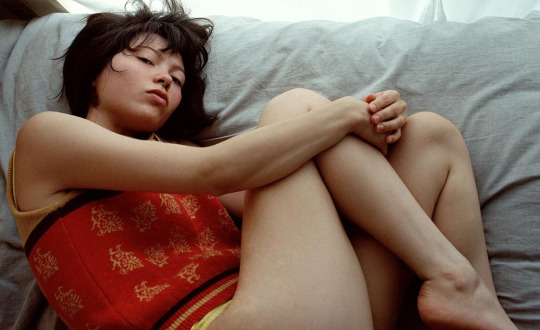

Julie Hachiya and Hibari Hills photographed by Hugo Comte for Cult* Magazine Tokyo
#Julie hachiya#julie_hachiya#hiparis_oira#hibari hills#cult magazine#magazine#cult magazine Tokyo#hugo comte#Hugocomte#cult* magazine
548 notes
·
View notes
Text
Governance in Hyrule
A hundred years after the Calamity, the Hyrulean monarchy only exists in the form of a ruined castle and a legendary princess. Not much can be said about the monarchy in its absence, but it’s interesting to think about in relation to the other systems of governance in Hyrule.
Although the Zora have a royal family, they’re essentially living in a communist utopia of shared resources and communal living spaces. Everyone works according to their interests and talents, and individual disagreements are given voice but ultimately suppressed for the good of the group.
Rito society seems to be the opposite. Warriors are highly respected, and they act according to their own individual ideas of what they think is the best course of action. Kaneli, the chief of Rito Village, is a retired warrior whose role seems to be largely symbolic. Although the village chief is respected, he has no real control over the younger warriors.
Kakariko Village seems to operate somewhere in the middle. As the village elder, Impa maintains cultural lore and tradition, and she can suggest courses of action. Still, her role is symbolic, and she does not directly arbitrate disputes or issue commands.
The Yiga are a bunch of obnoxious theater kids who have formed a cult around the most obnoxious theater kid. They are an outlier and should not be counted.
The Gorons seem to be set up like a corporation. Bludo is the founder of the Goron Group Mining Company, and he oversees its operations and manages trade. He commands respect, but he isn’t particularly concerned with anything outside his own interests. A lot of people who work for him don’t agree with his decisions, but they take it for granted that “labor” is what they should be doing. The Gorons are modeled on a stereotype of the traditional working class of downtown Tokyo, and I think their portrayal is meant to be a lighthearted parody of working-class solidarity.
Riju is the only person even remotely resembling a true ruler, and she’s an almost platonic ideal of a just and benevolent sovereign. She commands soldiers, directly confronts outside threats, enforces security over the market, ensures the fair distribution of resources, holds audiences with advisors and individual citizens, and generally works to maintain the wellbeing of her people. The idea seems to be that, as the only actual city in Hyrule, Gerudo Town is the only place that requires an actual government.
Meanwhile, the Hylians seem to be doing just fine without any sort of government at all. They live in a beautiful and happy post-scarcity world where everyone has a place to live and enough to eat. Roads, bridges, and public stables are carefully maintained, and trade flows smoothly. People travel for pleasure and are free to pursue their own interests, whether it’s studying leviathan bones or writing magazine articles or hunting for mushrooms or searching for romance.
It feels like the only real function of the Hyrulean monarchy was to combat Ganon, and Ganon only exists in opposition to the monarchy. I don’t mean to suggest that the destruction and loss of life that occurred during the Calamity was a good thing, but maybe it wouldn’t be such a tragedy if the Hyrulean monarchy were to end with Zelda…?
#Legend of Zelda#Breath of the Wild#Zora#Rito#Sheikah#Gorons#Gerudo#Impa#Riju#let me tell you how much I love Riju#Zelda meta
340 notes
·
View notes
Photo
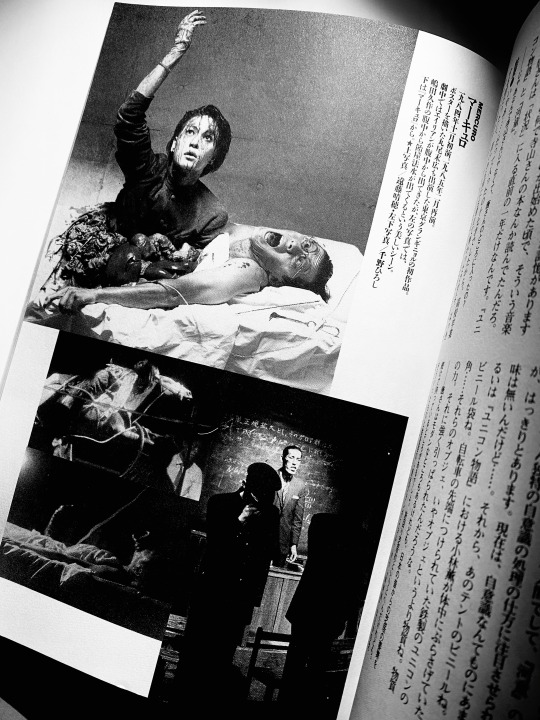
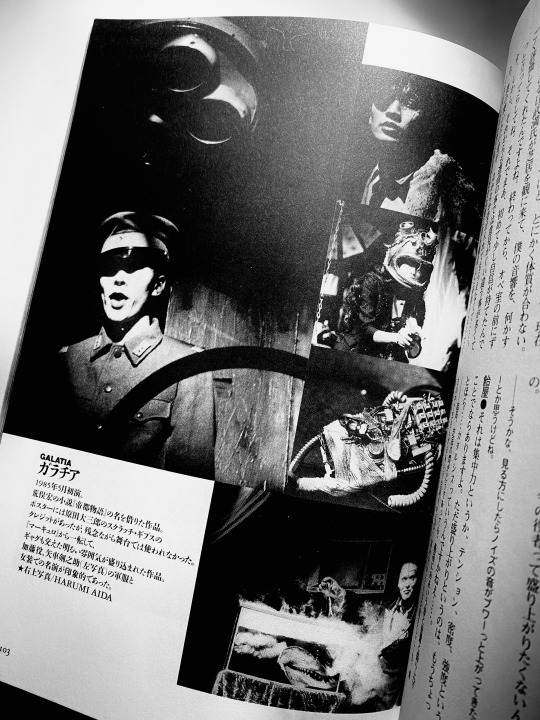
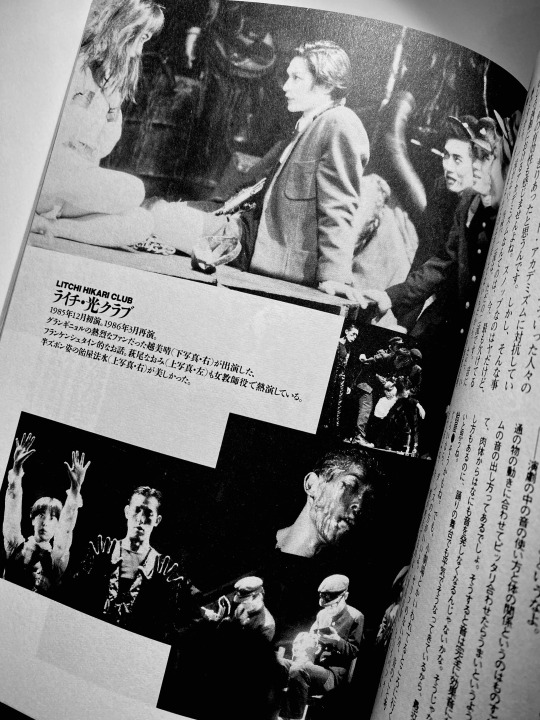
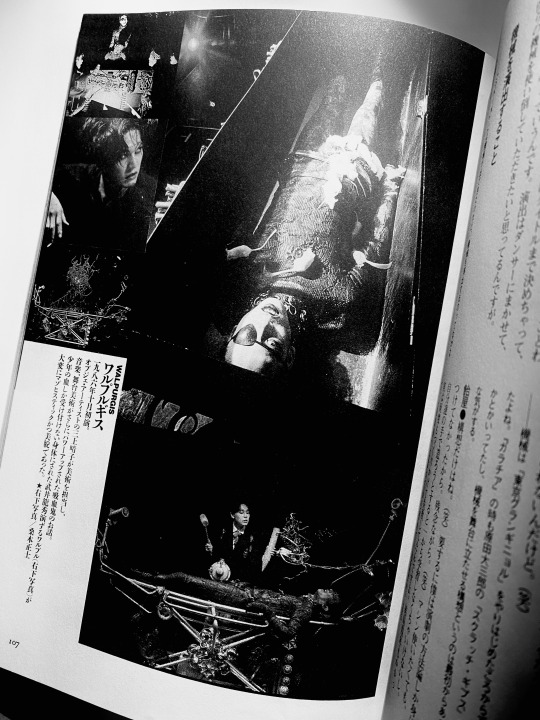
Image spreads of all four of the original Tokyo Grand Guignol horror plays in order of serialization. Some of the images are ones that have been online for years. Others are ones that were either unreleased or ones that were only shown in a cropped state, such as the group photo from Lychee. The source of the images is the 28th volume of Yaso magazine, which included an interview with Norimizu Ameya, the founder and lead director of the Tokyo Grand Guignol. The plays in order of appearance are: - Mercury (1984) - Galatia Teito Monogatari (1985) - Lychee Light Club (1985) - Walpurgis (1986) Galatia’s inclusion was a surprise as out of all the plays the TGG had performed, it remains the one with the least visual documentation despite its basis in a popular media franchise and it’s direct influence on the cult film adaption with special effects designed by H.R. Giger. Kyusaku Shimada’s casting in the film version was apparently a result of his appearance in the TGG adaption. I’m unsure if its lack of subsequent representation is either from copyright issues or if Ameya possibly saw the play as being unsatisfactory in retrospect. Very little is known of the production, but from an audio recording that exists on Nico Video it appears that the play was more outwardly comedic in tone. One interesting aspect I noticed is that set decoration included reused set pieces from Mercury’s second act in the science lab, namely the operating table light and the skeletal lizard head that was used during the surgery scene.
137 notes
·
View notes
Text
and i think about the unfinished projects and stale dreams
i could get real good at piano i could get real good at guitar i should buy a bass guitar and get good at that theres that article i told someone i would write i should get started on that track for that mixtape what if i release a concept album what if i make a video game what if i learn to draw nude figures what if i get really good at film photography what if i make a movie, like a feature film no that's crazy i could make a short film tho what if i get back into cycling i don't wanna do it right now tho, just feels weird what if i become a randonneur. i bet i wouldn't even have to train much i should make some more furniture what if i get really into sharpening hand planes should i buy a tormex if i got really into any kind of craft i could go to a small town in japan and learn from the master i should learn japanese i should learn german i should learn dutch i should learn spanish i should do knee strength and mobility exercises i should do a pull up i should reduce my life goals into small pieces so that i can feel like i can start i should express my life goals in the most grandiose and expansive terms possible so that i can feel excited about them i should make ceviche i should buy my produce locally i should plank i should grow herbs again i should voice call some people from my middle distance past and see how they are doing i should study the jhanas i should do metta i should do vipassana i should sleep more i should sleep less i should read more of infinite jest i should read more of 2666 i should read the rest of the accursed share i should reread the first part of the accursed share i should floss right now i should pickle vegetables at home i should say something cute to my girlfriend i should just do whatever i feel like doing in the moment i should put on more lip balm i should sell all my possessions i should go on holiday i should look up flights i should plan a journey around the world i should buy a car i should fix up my bike i should get back into running i should get back into badminton i should do physio for my pinky finger i should get back into weightlifting i should make more friends i should hang out with my existing friends i should join some kind of cult or the military or the church and have someone tell me what to do all the time i should learn how to be better at sex i should relax i should focus i should enjoy things as they are i should change things i should move my furniture around i should shave my armpits i should shave my face i should shave my pubes i should buy coconut oil i should buy shea butter i should get back into drinking yerba mate i should stretch i should go to lisbon i should go to berlin i should go to paris i should go to tokyo i should go to singapore i should go to mexico city i should go to istanbul i should go to bangkok i should make more plans i should bail on all of my plans i should just stop trying to do much shit i should stop wasting my free time doing fuck all i should invite my friends round for dinner i should write a book i should read more books i should read more magazines i should go to art galleries i should listen to live music i should watch movies i should watch anime i should stop using my electric toothbrush i should make a robot i should make a lamp i should code something i should make a decentralised social network i should drink more tea i should drink less coffee i should sing more i should throw up i should lie down on the floor i should do more self massage
etc etc
6 notes
·
View notes
Text
3/22
The main question in penguindrum is do we have power over fate? Himari is destined to die in order to atone for her parent’s sins, and her brother will do all that they can to turn her fate around. In these first few episodes, challenging fate seems useless as Himari dies two times. Her brother Kanba sacrificed parts of his life to keep his sister alive. She is possessed by this penguin queen spirit who tells the boys they must find the penguin drum to keep Himari alive. I also wonder if the penguindrum would keep Himari and the queen alive as she seems to die when Himari dies and comes back when she does as well. Will the penguin queen spirit continue to live through Himari??? Himari and her brother’s parents were responsible for a terrorist attack that occurred in a subway and Himari was punished for their action. An analogy of 3 lambs and their caretaker is used to explain the family’s dilemma. When the caretaker disobeyed the goddess, the goddess decided to take the life of the gentle youngest lamb, as the ultimate punishment would be the most unfair. Himari represents this lamb as she pays for her parent's sins with her life…several times might I add. The boys fight for the chance that fate can be challenged and one does not have to follow a predetermined destiny. The characters Momoka and Ringo believe in fate and don’t think of it as something cruel. The subway incident in penguindrum represents the Tokyo subway sarin attacks that happened on March 20th, 1995. A terrorist group/cult that had religious undertones released sarin, a lethal chemical into subway lines, for reasons that are not completely clear. Around 13 people died and over a thousand were injured; in episode 13 pays tribute to the subway attack their parents were responsible for. I see this as Penguindrum’s way of acknowledging the subway attack in 1995 and critiquing the way Japan went about the situation. There are also hints of criticisms of capitalism, as the parents and Sanetoshi believe the world is heavily influenced by selfishness and people being placed in boxes where they do not have to care for others which are the root of evil in this world. The only solution they see fit is to destroy the world. Momoka is a direct contrast to this idea as she is optimistic and sees the beauty in the world. Lastly, why penguins? Penguins represent a struggle with identity. While they are birds, they are not the first that comes to mind when you think of a bird. They have wings but can’t fly, they spend a lot of time swimming but aren’t exactly sea animals. The three penguins in these episodes each represent a sibling. One is obsessed with spicy girl magazines, one is always killing roaches, and the other is cutely knitting a blanket. As the siblings are faced with so much turmoil we forget that they are kids with their own unique personalities. The cute penguins remind us of their child-like nature even though they cannot simply live as kids and are forced to grow up. I apologize for the yapping.

2 notes
·
View notes
Text
Fashion's Poet of Black : YAMAMOTO
by Suzy Menkes, for the New York Times (2000)
For the first time in recent fashion memory, black — essential, existential black — is no longer the ultimate symbol of cool. Black has dominated designer dressing, just as it has clad the entire fashion profession, since the wave of Japanese style swept over fashion in the early 1980s.
But now color has burst into the autumn clothes. Bright hues and subtle patterns are challenging dark and monochrome — and nowhere more so than from the designers for whom black was once the only fashion creed.
Yohji Yamamoto has built a career on proving that black — aggressive, rebellious, somber, romantic or seductive — is beautiful. He, more than most designers, is the poet of black, the director of fashion's film noir. In fact, a celluloid version of his favorite men in black was shown Saturday at the Venice film festival, where Yamamoto designed the costumes (not to mention the loud jewelry) for "Brother," a new movie by Takeshi Kitano about the yakuza, Japanese gangsters.
What is the lure of black that Yamamoto has been addicted to it since he first graduated from fashion college in Tokyo in 1969?
"Why black?" says Yamamoto, sitting in his Paris studio, black beard and black hair above a dense black honeycomb sweater, mat-black pants and black sneakers flashed with scarlet.
"Black is modest and arrogant at the same time," he says. "Black is lazy and easy — but mysterious. It means that many things go together, yet it takes different aspects in many fabrics. You need black to have a silhouette. Black can swallow light, or make things look sharp. But above all black says this: 'I don't bother you — don't bother me!"'
All this is said with a merry smile that belies Yamamoto's reputation as a designer of clothes for earnest intellectuals. Recent collections have shown rather a whimsical sense of humor: the Inuit-inspired autumn line with its russet paisleys and furry hoods, and the 1998 "wedding" show, in which a bridal "striptease" took models from inflated Victorian crinolines to slim-line dresses and pants.
For men, the art-director image of black suit with truncated proportions, shown on brawny-to-scrawny guys, has also been replaced by a more macho, even rock-star look. (As recreation, Yamamoto plays guitar or harmonica with a group called Suicide City.)
Yamamoto cut his fashion teeth in his widowed mother's dressmaking business, but rebelled at the clients' arriving with magazine styles to copy.
"At the very beginning, I just wanted women in men's style," he says. "Typically Japanese women were wearing imported and very feminine things and I didn't like it. I jumped on the idea of designing coats for women. It meant something for me — the idea of a coat guarding a home, hiding the woman's body. Maybe I liked imagining what is inside."
When an avant-garde buyer gave Yamamoto his first corner in a store, he was faced with what he calls elliptically "very strong competition" and "the start of my Olympic games." He was referring to the designs of Rei Kawakubo, his long-term partner and fashion picador under her label Comme des Garcons. Together — yet with entirely separate aesthetics — they created dark shrouds, asymmetrically cut in fluid, indeterminate shapes, and sheltering sweaters that clothed the acolytes of the all-black cult.
Of course, Japanese designers did not introduce black to 20th-century fashion, as witness the Parisian elegance of Coco Chanel's little black dress or Yves Saint Laurent's tuxedo, and rebellious style from Beatniks through Marlon Brando. But there was an abstraction, a modernism and a lack of visual definition in the work of fashion's avant garde that seemed to be layered in meaning, in the spirit of Mark Rothko's "dark" paintings.
Yamamoto, born in 1943, describes a "lost" postwar generation, educated to look to America or Europe and ignore Japanese tradition. So when his experiments in pushing the boundaries of shape and proportion were hailed as "Japanese" style, he was baffled.
Yamamoto sees his original look emerging from punk. His first collection was presented in Tokyo in 1977 and in Paris in 1981 when the "Japanese" (including Issey Miyake and Kenzo Takada, who were five years his senior) seemed diametrically opposed to everything that French fashion stood for: its well-defined cut and silhouette, its familiar fabrics, its conception of female allure and coquetry. Even 15 years later, when Carolyn Bessette Kennedy favored Yamamoto's designs in the mid-1990s, her choice of flat-plane, dark clothes to frame her good looks still seemed revolutionary.
The French electronic musician Jean-Michel Jarre once defined Yamamoto's style like this: "His work is totally different from anything else. I like the quasi-religious approach he has to fashion. For me, a woman in Yohji is like a nymphomaniac nun. His clothes are at once sensual and very ritualistic."
That phrases captures the eroticism lurking under the skillful tailoring of a purist exterior. In his genuine affection for women, Yamamoto stands apart in a fashion world where male designers tend either to idolize or to dislike the female sex. He admits that "my life is thinking about women."
"First my mother — last my daughter," he says. "And in between are all the secret ones."
Mother, daughter and son (who has brought him a granddaughter) all work in the business: His mother is the revered directrice; his daughter was launched in March, after three years as pattern cutter, as designer of the ready-to-wear line called Y's bis Limi. The proud father claims, "She'll be strong — she'll be bigger than me."
Yamamoto's career reached its zenith with the 1998 "wedding" collection. It confirmed the new, romantic path he had taken as he shifted register from masculine to feminine. The catalyst was his study of haute couture. He pored over the neo-Edwardian gowns of the American designer Charles James at the Brooklyn Museum of Art in the summer of 1999, when he was in New York to pick up an American Fashion Award. In the jigsaw of pattern pieces he uncovered "another designer's process."
The museum has now asked him to curate a fashion exhibition from its archives. It will open in autumn 2001 and thus commemorate the anniversary of 20 years showing in Paris, although Yamamoto says he is thinking not of his past but of "tomorrow and the day after tomorrow." At 56, he thinks vaguely of retiring and of fulfilling his ambition to write. He worries that others might think, "Yohji, you have sung your song already."
A recent Yamamoto signature has been the swoop of a back, from the geisha-esque curve of the nape through the base of the spine to the neo-Victorian bustle.
"This is my fetish idea for a woman's body," he says. "I like the back curve line of women. I am always watching the silhouette in the streets. The rib cage and the hip is very important for me. The image represents the back of a woman. I'm always following her. Don't go! Don't leave me!"
Don't count on Yamamoto, or his women, turning their backs on black.
11 notes
·
View notes
Text
Title: Unraveling the Legacy of "Akira": A Glimpse into a Cyberpunk Masterpiece
Introduction
In the vast realm of anime and manga, few names resonate as profoundly as "Akira." A groundbreaking work of art that transcends its medium, "Akira" has left an indelible mark on pop culture and storytelling. Crafted by Katsuhiro Otomo, this cyberpunk masterpiece has captivated audiences since its inception in the late 1980s. Its influence spans beyond its genre, reaching into film, literature, and even fashion. Let's delve into the world of "Akira," exploring its origins, impact, and enduring legacy.
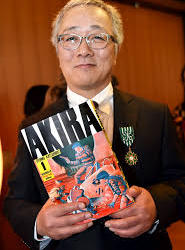

Origins and Creation
Katsuhiro Otomo first introduced "Akira" in 1982 as a manga series serialized in the pages of the monthly publication Young Magazine. This marked the beginning of a creative journey that would redefine the cyberpunk genre. Otomo's visionary storytelling and intricate artwork drew readers into a dystopian Tokyo known as Neo-Tokyo, a city recovering from the ashes of a devastating explosion that occurred in 1988. The narrative revolves around a group of friends caught in a web of government conspiracies, psychic powers, and societal turmoil.
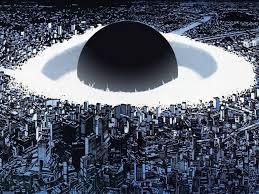

Impact and Influence
"Akira" didn't just captivate its audience; it reshaped the landscape of anime and manga. The release of the anime film adaptation in 1988 further propelled its fame, introducing its cyberpunk aesthetics to a global audience. The film's stunning visuals and thought-provoking themes contributed to its cult status, becoming a cornerstone for future generations of creators.
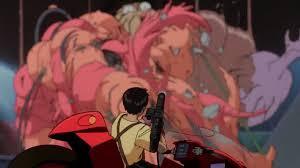
The resonance of "Akira" can be felt in numerous aspects of pop culture. Its cyberpunk vision has inspired countless films, books, and artworks, including classics like "Blade Runner" and "The Matrix." The film's impact on storytelling, animation techniques, and character development is immeasurable, with its fingerprints evident in subsequent anime series and movies.
Themes and Symbolism
Beneath the surface, "Akira" explores profound themes that remain relevant to this day. It delves into the consequences of unchecked power, the clash between societal progress and cultural preservation, and the fragility of human relationships in the face of catastrophic events. The psychic abilities of the characters serve as a metaphor for untapped potential and the dangers of uncontrolled advancement.

Legacy and Continued Relevance
More than three decades after its inception, "Akira" continues to captivate new audiences. Its themes of urban decay, technological obsession, and the thin line between order and chaos resonate in an era defined by rapid technological advancement. The allure of Neo-Tokyo's dark and gritty landscape continues to inspire creatives, evidenced by its influence in music, art, and fashion.
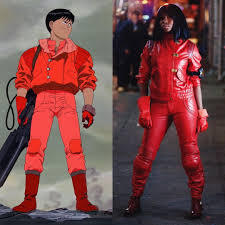
Conclusion
"Akira" isn't just an anime or manga; it's a cultural touchstone that has left an indelible mark on the creative world. Katsuhiro Otomo's visionary work has shaped the way we perceive dystopian futures, human potential, and the consequences of unchecked power. As new generations discover the wonders of "Akira," its legacy is set to endure, reminding us of the power of storytelling to transcend time and captivate the human imagination.
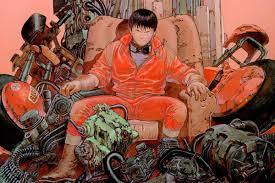
3 notes
·
View notes
Text
2. Freedom of the Press in Japan – Unification Church style

The Washington Post September 16, 1984
extract: “… At a later meeting in June 1983 on Korea’s Cheju Island, Moon told a church group that four things were necessary for world consolidation: ideology, economy, science and technology, and journalism.
“With journalism, we have now reached success by establishing The Washington Times,” Moon said, according to Yoshikazu Soejima. “We now have a direct influence on Reagan through The Washington Times.”
By Soejima’s account, his break with the church followed a dispute over editorial independence. As editor of Sekai Nippo, Soejima said, he was attempting to transform the paper from a church organ into a respected journal with general appeal. At the end of last September, however, he said, he began to hear rumors that Moon had ordered his firing.
On the first of October [1983], about 100 people – including about 30 in special karate training groups – barged into the paper’s office. They were led by members of Shokyo Rengo, an anticommunist political group affiliated with the [Unification] church, Soejima said. They broke into desks, stole papers and beat up some of the employees, he said. Soejima, Inoue and a policeman that Soejima had previously summoned took shelter in an office when they arrived. “The church members kicked in the door but stopped when they saw a policeman inside,” he said.
Sekai Nippo vice president Naohiro Nada said the church fired Soejima because he was trying to seize full control of the newspaper and make himself president. Soejima filed papers at the company registry to accomplish this, Nada said. Soejima says he did so to protect his position after learning Moon planned to fire him.
On June 2 1984, Soejima was attacked outside his home in Tokyo and stabbed repeatedly, according to police reports. When the attack occurred, he was preparing an article「これが『統一教会』の秘部だ」critical of Moon that was later published in the Japanese magazine Bungeishunju, he said.
During an interview, Soejima unbuttoned his shirt to show scars on his left bicep, neck and chest, which he says he got in the attack. No one has been arrested in the case.”
__________________________________
Moon’s Japanese Profits Bolster Efforts in U.S.
By John Burgess and Michael Isikoff
Washington Post Staff Writers
Sunday, September 16, 1984; Page A01
extract: “The Japanese branch of the Rev. Sun Myung Moon’s Unification Church has transferred at least $800 million over the past nine years into the United States to finance the church’s political activities and business operations, including The Washington Times newspaper, according to two former high-ranking church officials.
This money is generated in Japan, primarily through a Tokyo-based business operation that uses church members to sell marble vases, miniature treasure pagodas and other religious icons that are represented as having supernatural powers, the former officials said.
The sale of these items has been the principal source of capital for an international network of Unification Church operations, said the former officials, Yoshikazu Soejima and Hiroaki Inoue. …”
The above two extracts are a small part of a significant report.
Shigehiko Togo of the Washington Post Tokyo Bureau and special correspondent Martin Anderson in Montevideo, Uruguary, contributed to this report.
Full Washington Post report here:
http://www.washingtonpost.com/wp-srv/national/longterm/cult/unification/profit.htm
________________________________________
The case of a mysterious death at a CARP training session in Japan. The 18 year-old student had been beaten.
The incident of the strange death at the training session, which I wrote about in Chapter 1 of this book, was reported in the Weekly Asahi 週刊朝日. This article provides a glimpse into the Unification Movement’s training sessions, so it is included here as a reference for readers.
日本の狂気―勝共連合と原理運動 (1971年) Link to the Japanese
Frenzy in Japan – The Federation [for Victory over Communism] and the Unification Church (1971)
by Arai Arao 荒井 荒雄
________________________________________
1. Freedom of the Press in Korea – Unification Church style
Moon’s followers poured a pot of urine and feces on the head of a Seoul University Professor of Religion.
Tahk Myeong-hwan was offered a bribe of $450,000 to discontinue research into the Unification Church
The Korean regime imprisoned former Unification Church members who revealed the inner workings of the UC
In 1975 Korean Unification Church members physically attacked many Christian pastors
“In Korea, one even senses a fear, like one induced by the Mafia, among the opposition, and … outspoken opponents speak of death threats.” Prof. Sontag, 1976
Prime Minister Kishi of Japan, organised crime and the Moon involvement in Japanese politics gained protection for the UC 1a. The LDP’s Tangled Ties to the Unification Church (2022) 1b. NNLASS press conference held in Tokyo on FFWPU/UC “spiritual sales” (2022) 2. Richard J. Samuels – Kishi and Corruption: An Anatomy of the 1955 System (2001) 3. John Roberts – Earth-conquering Moonies (1978) 4. Kishi wrote a letter to President Reagan to get Moon sprung from jail. (1984)
This is the hidden side of the ‘Unification Church’ Soejima Yoshikazu
これが 『統一教会』 の秘部だ
世界日報事件で『追放』された側の告発
『文藝春秋』 1984年7月号 副島嘉和 編集局長
そえじま よしかず
(「インフォメーション」編集発行人) 井上博明 営業局長
いのうえ ひろあき
(「インフォメーション」営業担当)
暴カをふるって占拠
なぜ訣別したのか
「愛のマグロ釣り研修」とは
日本語版から削除された個所
敬礼式の奇怪な儀式
金集めに狂奔
「ハッピ一ワ一ルド」社とは?
脱税の手ロ
セ一ルスマン用の手引書
米国における脱税裁判
#Unification Church#violence in the Moon church#violence#Family Federation for World Peace and Unification#Sun Myung Moon#Hak Ja Han#Sekai Nippo#これが 『統一教会』 の秘部だ#副島嘉和#井上博明
4 notes
·
View notes
Text
Blog Entry 1
Japenese Horror in the 90s and 2000s is a very popular movie genre but differentiates from the traditional Western representation of horror that we are used to viewing. Japanese Horror tends to be more focused on either psychological horror or themes of folk religion. The psychological horror uses elements of tension-building and the supernatural, mostly involving ghosts and poltergeists. The folk religion aspect of the genre dives into topics such as possession, exorcisms, shamanism, and precognition.
A main factor that influenced horror in Japan was the bombing of Hiroshima and Nagasaki in 1945. This influenced Japanese films to move towards being about vengeful ghosts, radiation mutants, and kaiju. Kaiju are giant monsters created from radiation, the most commonly known being Godzilla. These films were a way to express the fear and destructiveness that was brought about by the atomic bombs dropped on Japan. The post-war era is when the horror genre rose within Japan due to this very reason.
Japanese Horror has much more influence on Western horror than many are aware of. The Ring, a very popular horror movie, is actually a remake of the movie Ring (1998) which gained cult status in the West. At the time Hollywood horror had been primarily dominated by the slasher sub-genre of horror. This genre relies mostly on on-screen violence, shocking visuals, as well as gore. Ring was much different than this because it left most of the terror to the viewer's imagination rather than shocking them. This is the film that brought awareness and grew interest in the West about Japanese Cinema, specifically Japanese horror. Many different Japanese horror movies have been remade through Hollywood such as The Grudge (2004) Dark Water (2005) and One Missed Call (2008).
Overall japanese horror can be divided into many different sub-genres. The first of these, which was previously mentioned, is Kaiju monster films with Godzilla being the most popular. The Monster Times magazine conducted a poll in 1973 which determined that Godzilla was the most popular movie monster, beating many Western horror monsters such as Dracula, King Kong, The Mummy, Frankenstein's monster, creature from the black lagoon, and many others. There are also many Japanese films that fall under the sub-genre of zombies. One of the earliest of these films was Battle Girl: The Living Dead in Tokyo Bay (1991) directed by Kazuo Komizu, however, this film didn't do amazing at the Japanese box office. in 1996 there were two Japanese zombie games, Resident Evil and The House of the Dead, which were very successful and sparked a new interest in the subject. Movies that were released after these games debut did far better in terms of success and popularity.
Overall the genre of horror in Japanese film is a very broad and popular part of film. These films have influenced Western cinema to a great extent and have inspired many different movies. There is a wide selection of movies to choose from that changed how people perceive horror films.
1 note
·
View note
Link
#DondeLeaumont#FourTripsAhead#GailWorley#GhostCultMagazine#HardRock#IYieldMyTime#Keefy#KenPierce#KenPierceMedia#Kiss#MarkMorris#Mark'sMetalMinute#MusicDiscussion#NikCameron#PeterWilson#PiercingMetal#SoutheastOfHeaven#TheGlaciallyMusicalPouredcast
0 notes
Text

Leiya photographed by Erika Kamano for Cult* Magazine Tokyo
#lei___official#erika kamano#erikakamano#magazine#cult magazine#cult* magazine Tokyo#cult* magazine#will this get a warning. let’s see
640 notes
·
View notes
Text
CESNUR has been described as "the highest profile lobbying and information group for controversial religions".[7] CESNUR's scholars have defended such diverse groups as the Unification Church, [falun gong,] the Church of Scientology,[7] the Order of the Solar Temple (responsible for 74 deaths in mass murder-suicide),[8][9][10][11] and Shincheonji Church of Jesus, accused of having aided the spread of the COVID-19 pandemic in South Korea.[12][...]
[A] United States Department of State [report] quoted repeatedly Bitter Winter as "an online magazine on religious liberty and human rights in China" in the China section of its 2018 International Religious Freedom Report.[49] [...]
In the aftermath of the 1995 sarin gas attack on the Tokyo subway, CESNUR board member J. Gordon Melton and occasional CESNUR conference speaker James R. Lewis flew to Japan at the expense of Aum Shinrikyo; they then held press conferences in Japan stating their belief that the group did not have the ability to produce sarin and was being scapegoated.[54][55][56][57][...]
In 2018, Bitter Winter was criticized for its sympathetic coverage of Eastern Lightning, a group regarded as a cult in China.[60][...]
In 2019, CESNUR's Bitter Winter co-hosted in Seoul with Human Rights Without Frontiers a conference supporting the right of asylum of Eastern Lightning and Uyghur refugees from China living in South Korea. Members of Eastern Lightning and the Uyghur diaspora also spoke in the conference.[72][...]
On November 29, 2019, CESNUR co-organized a seminar in Seoul claiming that thousands of members of Shincheonji, a group many in South Korea regard as a cult, had been subject to forcible deprogramming.[73] [founder of CESNUR] Introvigne was among the speakers.[74]
The group's core tenet is that Jesus Christ has returned to earth and is presently living as a Chinese woman.[4] The name "Eastern Lightning" alludes to the Gospel of Matthew 24:27: "For as the lightning cometh out of the east, and shineth even unto the west; so shall also the coming of the Son of man be."
The movement has been described by Chinese media as the nation's 'most dangerous cult', and the group has been formally banned in China since 1995. Christian opponents and international media have in turn described it as a cult and even as a terrorist organization.[5][6] In contrast, members of the group deny all accusations and argue they are victims of religious persecution at the hands of Chinese authorities.[7]
42 notes
·
View notes
Photo







The women of Aum Shinrikyo.
#cults#aum shinrikyo#shoko asahara#aleph#tokyo#japan#cult#tokyo subway attack#tokyo subway sarin attack#chizuo matsumoto#vintage magazines#1990s#90s#original
289 notes
·
View notes
Text
AiB main cast Fun Facts

Ryouhei Arisu

was compared to his gifted younger brother a lot
His father was so ashamed by him that he didn't even want him to meet their relatives
Due to this, Karube said he has an inferiority complex because of his brother
He also shows strong dislike for his father, even saying that he "never wants to become an adult like him"
During his freshmen year he described his "father's oppressive criticism as on its height"
His first impression of Chōta was "Idiotic, Hopeless" and somebody he had no intentions of befriending
his advisor taught him to play guitar and he was actually passionate about it for a while
his dad pressured the university to transfer the advisor and got rid of his guitar after which he threw a brick at his own house
He was implied to have been (mildly) suicidal and considered his friends as his only reason to live even before borderland.
Wanted to be a reportage writer; travel the world, gather materials and write articles for newspaper and magazine.
Arisu wished for an earthquake or biohazard outbreak to happen believing he would get more responsible this way, he also wanted time to stop and to visit Australia or a foreign country (forshadowing to his trip to borderland)
Karube

Karube's mother worked as a prostitute and his dad was not in the picture
He had his own bar at 18 where Chōta and arisu would come over to drink and eat for free often
Dreamt of buying a ranch in Australia and raising sheeps with money he saved from his bar
He choose Australia because Arisu told him about his dream to visit the country
He wanted to have a son
Chōta
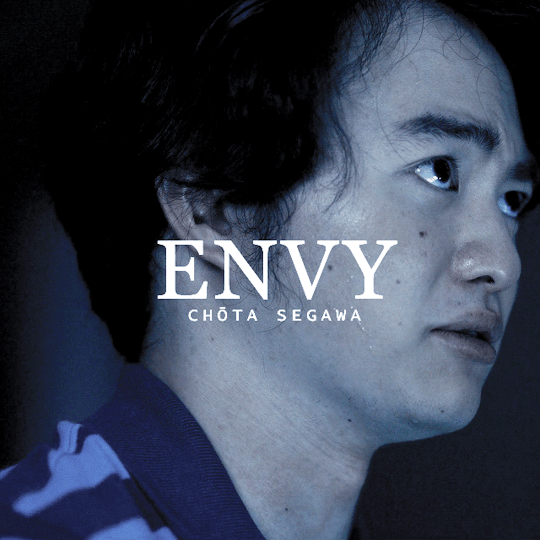
Both Chōta and Arisu spent their first night in Borderland crying
He was described as nicest person Arisu ever met after their second meeting
Was willing to throw a brick at Arisu's house for a piece of bread
His family was poor
His mother is religious fanatic (I belive I remember it being mentioned she was part of a cult but not 100% sure on that one)
In live action, his dream was stated to be making a drone that can be controlled with just an app.
Shibuki

She worked in dentist waiting room
She would bathe in Tokyo river since bathroom weren't functioning
Her parents argued about money and loans a lot while she was younger.
Her dad was implied to be alcoholic.
Has impulsive suicidal tendencies but also strong will to live that sometimes is shown
Has Survivor's guilt.
Craves to be understood, accepted and loved
Wishes to go back to "naive" way she was before borderland
Unlike in the drama, in the manga she was nearby Arisu during "hide and seek" but couldn't handle the thought of carrying the last wishes of both Chōta and Karube and choose her own death just like the other two sacrificed themselves for Arisu
In live adaptation she was shown sleeping with her boss to get a promotion
#AiB#alice in borderland#Alice in the Borderland#alice in borderland spoilers#imawa no kuni no alice#aib#aib karube#karube daikichi#arisu ryohei#Saori shibuki#chōta segewa#alice in borderland manga#alice in borderland character info#alice in borderland fun facts#ines ivy reads / watches
57 notes
·
View notes
Photo

https://www.instagram.com/p/BcHy5MkDrwl/
#shuichiro miyagawa#the north face#shun takeda#inspiration cult magazine#fashion#jfashion#photography#blue#japan#tokyo#hypebeast#shibuya
4 notes
·
View notes
Text
It was heralded by Le Monde in 1976 as “the first masterpiece of the feminine in the history of cinema”. Nearly 50 years later, Chantal Akerman’s Jeanne Dielman, 23 Quai du Commerce, 1080 Bruxelles has become the first feature by a female film-maker to be named the “greatest film of all time” by Sight and Sound, the magazine of the British Film Institute (BFI).
Akerman’s 70s classic, which follows the meticulous daily routine of a middle-aged widow over the course of three days – including having sex with male clients for her own and her son’s subsistence – topped the decennial poll this year for the magazine, pushing Alfred Hitchcock’s Vertigo to second place and Orson Welles’ Citizen Kane to third.
The Belgian film-maker was 25 when she shot the experimental, groundbreaking film starring Delphine Seyrig in the main role, and it has since become a cult classic – provoking years of analysis and debate.
“Jeanne Dielman challenged the status quo when it was released in 1975 and continues to do so today,” said Mike Williams, the editor of the Sight and Sound, which has conducted the poll every decade since 1952.
“It’s a landmark feminist film, and its position at the top of the list is emblematic of better representation in the top 100 for women film-makers.”
Dielman leapfrogged from 36th place in 2012. Williams said the film’s success was a reminder that there was “a world of underseen and underappreciated gems out there to be discovered”, and he emphasised the importance of repertory cinemas and home entertainment distributors in spotlighting undervalued films.
In fourth place this year came Yasujiro Ozu’s Tokyo Story, while three new films have made it into the top 10, including Wong Kar-Wai’s In the Mood for Love in fifth place (up from 24th in 2012), Claire Denis’s Beau Travail at No 7 (up from 78th in 2012) and David Lynch’s Mulholland Drive in eighth place (up from 28th).
The survey was its most ambitious to date this year, with more than 1,600 of the most influential international film critics, academics, distributors, writers, curators, archivists and programmers voting – almost double the number of participants in 2012. It is an eagerly anticipated moment within the global film community, representing a litmus test for where film culture stands.
In 2012, Vertigo took the No 1 spot from Citizen Kane, which had held it for 50 years. That year, Jeanne Dielman and Beau Travail were the only female film-makers’ films in the top 100. But this year’s poll features 11 films by female film-makers in the top 100, and four in the top 20.
Furthermore, in 2012 there was one film by a Black film-maker listed in the top 100 – Djibril Diop Mambéty’s Touki Bouki, at No 93. In 2022 there are seven titles in the top 100 by prominent Black film-makers. Touki Bouki has climbed to 67th place, with new entries including Spike Lee’s Do the Right Thing in 24th place, Barry Jenkins’ Academy award-winning Moonlight in joint 60th place, and Jordan Peele’s Get Out and Ousmane Sembène’s Black Girl jointly at No 95.
Jason Wood, the BFI’s executive director of public programmes and audiences, said: “As well as being a compelling list, one of the most important elements is that it shakes a fist at the established order. Canons should be challenged and interrogated and as part of the BFI’s remit to not only revisit film history but to also reframe it, it’s so satisfying to see a list that feels quite radical in its sense of diversity and inclusion.”
Laura Mulvey, a professor of film studies at Birkbeck, University of London, said the success of Jeanne Dielman – a film that closely adhered to the female perspective –signalled a shift in critical taste. “One might say that it felt as though there was a before and an after Jeanne Dielman, just as there had been a before and after Citizen Kane.”
Meanwhile, in a separate directors’ poll, a record 480 film-makers from around the world, including Jenkins, Martin Scorsese, Sofia Coppola, Bong Joon-ho , Lynne Ramsay and Mike Leigh, voted Stanley Kubrick’s 2001: A Space Odyssey the greatest film of all time. Citizen Kane was at No 2, and Francis Ford Coppola’s The Godfather was placed at No 3.
Sight and Sound’s top 20 greatest films of all time
1. Jeanne Dielman, 23, Quai du Commerce, 1080 Bruxelles (Chantal Akerman, 1975) 2. Vertigo (Alfred Hitchcock, 1958) 3. Citizen Kane (Orson Welles, 1941) 4. Tokyo Story (Yasujiro Ozu, 1953) 5. In the Mood for Love (Wong Kar-Wai, 2001) 6. 2001: A Space Odyssey (Stanley Kubrick, 1968) 7. Beau Travail (Claire Denis, 1998) 8. Mulholland Drive (David Lynch, 2001) 9. Man with a Movie Camera (Dziga Vertov, 1929) 10. Singin’ in the Rain (Stanley Donen and Gene Kelly, 1951) 11. Sunrise: A Song of Two Humans (FW Murnau, 1927) 12. The Godfather (Francis Ford Coppola, 1972) 13. La Règle du jeu (Jean Renoir, 1939) 14. Cléo from 5 to 7 (Agnès Varda, 1962) 15. The Searchers (John Ford, 1956) 16. Meshes of the Afternoon (Maya Deren and Alexander Hammid, 1943) 17. Close-Up (Abbas Kiarostami, 1989) 18. Persona (Ingmar Bergman, 1966) 19. Apocalypse Now (Francis Ford Coppola, 1979) 20. Seven Samurai (Akira Kurosawa, 1954)
7 notes
·
View notes